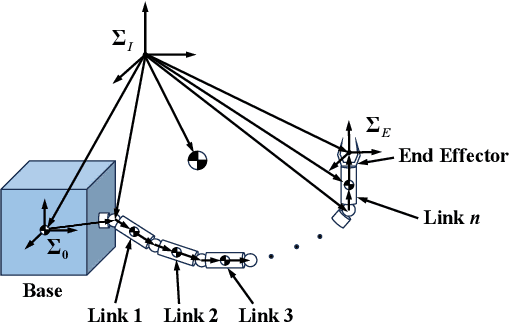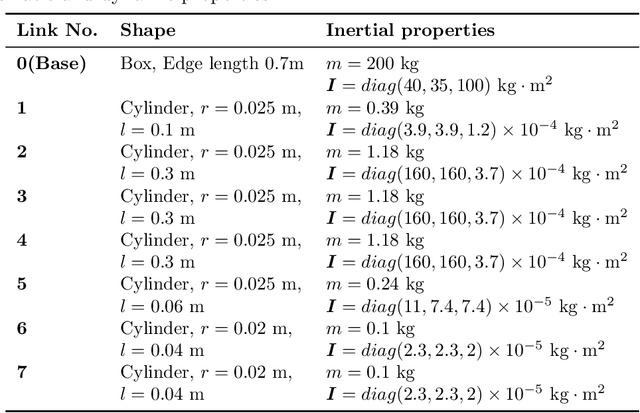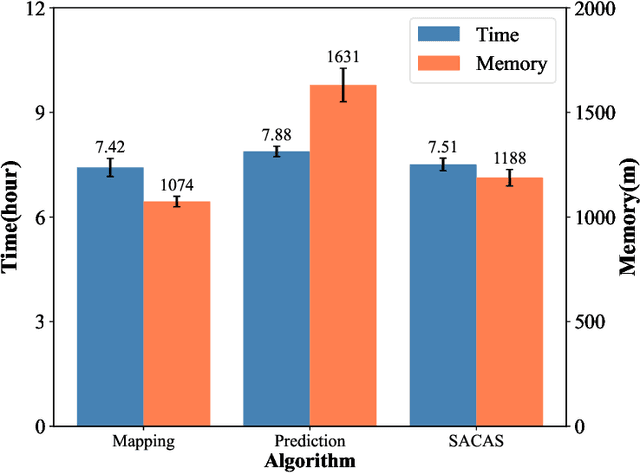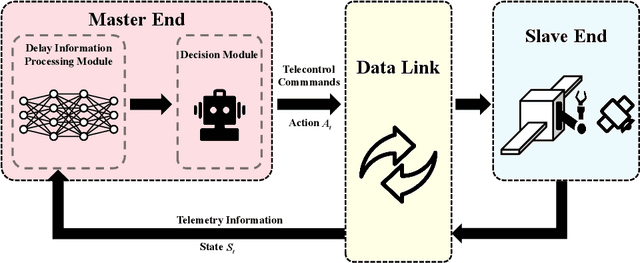Zhiheng Li
LlamaSeg: Image Segmentation via Autoregressive Mask Generation
May 26, 2025Abstract:We present LlamaSeg, a visual autoregressive framework that unifies multiple image segmentation tasks via natural language instructions. We reformulate image segmentation as a visual generation problem, representing masks as "visual" tokens and employing a LLaMA-style Transformer to predict them directly from image inputs. By adhering to the next-token prediction paradigm, our approach naturally integrates segmentation tasks into autoregressive architectures. To support large-scale training, we introduce a data annotation pipeline and construct the SA-OVRS dataset, which contains 2M segmentation masks annotated with over 5,800 open-vocabulary labels or diverse textual descriptions, covering a wide spectrum of real-world scenarios. This enables our model to localize objects in images based on text prompts and to generate fine-grained masks. To more accurately evaluate the quality of masks produced by visual generative models, we further propose a composite metric that combines Intersection over Union (IoU) with Average Hausdorff Distance (AHD), offering a more precise assessment of contour fidelity. Experimental results demonstrate that our method surpasses existing generative models across multiple datasets and yields more detailed segmentation masks.
DiST-4D: Disentangled Spatiotemporal Diffusion with Metric Depth for 4D Driving Scene Generation
Mar 19, 2025



Abstract:Current generative models struggle to synthesize dynamic 4D driving scenes that simultaneously support temporal extrapolation and spatial novel view synthesis (NVS) without per-scene optimization. A key challenge lies in finding an efficient and generalizable geometric representation that seamlessly connects temporal and spatial synthesis. To address this, we propose DiST-4D, the first disentangled spatiotemporal diffusion framework for 4D driving scene generation, which leverages metric depth as the core geometric representation. DiST-4D decomposes the problem into two diffusion processes: DiST-T, which predicts future metric depth and multi-view RGB sequences directly from past observations, and DiST-S, which enables spatial NVS by training only on existing viewpoints while enforcing cycle consistency. This cycle consistency mechanism introduces a forward-backward rendering constraint, reducing the generalization gap between observed and unseen viewpoints. Metric depth is essential for both accurate reliable forecasting and accurate spatial NVS, as it provides a view-consistent geometric representation that generalizes well to unseen perspectives. Experiments demonstrate that DiST-4D achieves state-of-the-art performance in both temporal prediction and NVS tasks, while also delivering competitive performance in planning-related evaluations.
CAO-RONet: A Robust 4D Radar Odometry with Exploring More Information from Low-Quality Points
Mar 03, 2025Abstract:Recently, 4D millimetre-wave radar exhibits more stable perception ability than LiDAR and camera under adverse conditions (e.g. rain and fog). However, low-quality radar points hinder its application, especially the odometry task that requires a dense and accurate matching. To fully explore the potential of 4D radar, we introduce a learning-based odometry framework, enabling robust ego-motion estimation from finite and uncertain geometry information. First, for sparse radar points, we propose a local completion to supplement missing structures and provide denser guideline for aligning two frames. Then, a context-aware association with a hierarchical structure flexibly matches points of different scales aided by feature similarity, and improves local matching consistency through correlation balancing. Finally, we present a window-based optimizer that uses historical priors to establish a coupling state estimation and correct errors of inter-frame matching. The superiority of our algorithm is confirmed on View-of-Delft dataset, achieving around a 50% performance improvement over previous approaches and delivering accuracy on par with LiDAR odometry. Our code will be available.
4D-CS: Exploiting Cluster Prior for 4D Spatio-Temporal LiDAR Semantic Segmentation
Jan 06, 2025Abstract:Semantic segmentation of LiDAR points has significant value for autonomous driving and mobile robot systems. Most approaches explore spatio-temporal information of multi-scan to identify the semantic classes and motion states for each point. However, these methods often overlook the segmentation consistency in space and time, which may result in point clouds within the same object being predicted as different categories. To handle this issue, our core idea is to generate cluster labels across multiple frames that can reflect the complete spatial structure and temporal information of objects. These labels serve as explicit guidance for our dual-branch network, 4D-CS, which integrates point-based and cluster-based branches to enable more consistent segmentation. Specifically, in the point-based branch, we leverage historical knowledge to enrich the current feature through temporal fusion on multiple views. In the cluster-based branch, we propose a new strategy to produce cluster labels of foreground objects and apply them to gather point-wise information to derive cluster features. We then merge neighboring clusters across multiple scans to restore missing features due to occlusion. Finally, in the point-cluster fusion stage, we adaptively fuse the information from the two branches to optimize segmentation results. Extensive experiments confirm the effectiveness of the proposed method, and we achieve state-of-the-art results on the multi-scan semantic and moving object segmentation on SemanticKITTI and nuScenes datasets. The code will be available at https://github.com/NEU-REAL/4D-CS.git.
Efficient Scaling of Diffusion Transformers for Text-to-Image Generation
Dec 16, 2024



Abstract:We empirically study the scaling properties of various Diffusion Transformers (DiTs) for text-to-image generation by performing extensive and rigorous ablations, including training scaled DiTs ranging from 0.3B upto 8B parameters on datasets up to 600M images. We find that U-ViT, a pure self-attention based DiT model provides a simpler design and scales more effectively in comparison with cross-attention based DiT variants, which allows straightforward expansion for extra conditions and other modalities. We identify a 2.3B U-ViT model can get better performance than SDXL UNet and other DiT variants in controlled setting. On the data scaling side, we investigate how increasing dataset size and enhanced long caption improve the text-image alignment performance and the learning efficiency.
LOMA: Language-assisted Semantic Occupancy Network via Triplane Mamba
Dec 11, 2024Abstract:Vision-based 3D occupancy prediction has become a popular research task due to its versatility and affordability. Nowadays, conventional methods usually project the image-based vision features to 3D space and learn the geometric information through the attention mechanism, enabling the 3D semantic occupancy prediction. However, these works usually face two main challenges: 1) Limited geometric information. Due to the lack of geometric information in the image itself, it is challenging to directly predict 3D space information, especially in large-scale outdoor scenes. 2) Local restricted interaction. Due to the quadratic complexity of the attention mechanism, they often use modified local attention to fuse features, resulting in a restricted fusion. To address these problems, in this paper, we propose a language-assisted 3D semantic occupancy prediction network, named LOMA. In the proposed vision-language framework, we first introduce a VL-aware Scene Generator (VSG) module to generate the 3D language feature of the scene. By leveraging the vision-language model, this module provides implicit geometric knowledge and explicit semantic information from the language. Furthermore, we present a Tri-plane Fusion Mamba (TFM) block to efficiently fuse the 3D language feature and 3D vision feature. The proposed module not only fuses the two features with global modeling but also avoids too much computation costs. Experiments on the SemanticKITTI and SSCBench-KITTI360 datasets show that our algorithm achieves new state-of-the-art performances in both geometric and semantic completion tasks. Our code will be open soon.
Will Large Language Models be a Panacea to Autonomous Driving?
Sep 24, 2024



Abstract:Artificial intelligence (AI) plays a crucial role in autonomous driving (AD) research, propelling its development towards intelligence and efficiency. Currently, the development of AD technology follows two main technical paths: modularization and end-to-end. Modularization decompose the driving task into modules such as perception, prediction, planning, and control, and train them separately. Due to the inconsistency of training objectives between modules, the integrated effect suffers from bias. End-to-end attempts to address this issue by utilizing a single model that directly maps from sensor data to control signals. This path has limited learning capabilities in a comprehensive set of features and struggles to handle unpredictable long-tail events and complex urban traffic scenarios. In the face of challenges encountered in both paths, many researchers believe that large language models (LLMs) with powerful reasoning capabilities and extensive knowledge understanding may be the solution, expecting LLMs to provide AD systems with deeper levels of understanding and decision-making capabilities. In light of the challenges faced by both paths, many researchers believe that LLMs, with their powerful reasoning abilities and extensive knowledge, could offer a solution. To understand if LLMs could enhance AD, this paper conducts a thorough analysis of the potential applications of LLMs in AD systems, including exploring their optimization strategies in both modular and end-to-end approaches, with a particular focus on how LLMs can tackle the problems and challenges present in current solutions. Furthermore, we discuss an important question: Can LLM-based artificial general intelligence (AGI) be a key to achieve high-level AD? We further analyze the potential limitations and challenges that LLMs may encounter in promoting the development of AD technology.
Rhythmic Foley: A Framework For Seamless Audio-Visual Alignment In Video-to-Audio Synthesis
Sep 13, 2024



Abstract:Our research introduces an innovative framework for video-to-audio synthesis, which solves the problems of audio-video desynchronization and semantic loss in the audio. By incorporating a semantic alignment adapter and a temporal synchronization adapter, our method significantly improves semantic integrity and the precision of beat point synchronization, particularly in fast-paced action sequences. Utilizing a contrastive audio-visual pre-trained encoder, our model is trained with video and high-quality audio data, improving the quality of the generated audio. This dual-adapter approach empowers users with enhanced control over audio semantics and beat effects, allowing the adjustment of the controller to achieve better results. Extensive experiments substantiate the effectiveness of our framework in achieving seamless audio-visual alignment.
Trajectory Planning for Teleoperated Space Manipulators Using Deep Reinforcement Learning
Aug 10, 2024



Abstract:Trajectory planning for teleoperated space manipulators involves challenges such as accurately modeling system dynamics, particularly in free-floating modes with non-holonomic constraints, and managing time delays that increase model uncertainty and affect control precision. Traditional teleoperation methods rely on precise dynamic models requiring complex parameter identification and calibration, while data-driven methods do not require prior knowledge but struggle with time delays. A novel framework utilizing deep reinforcement learning (DRL) is introduced to address these challenges. The framework incorporates three methods: Mapping, Prediction, and State Augmentation, to handle delays when delayed state information is received at the master end. The Soft Actor Critic (SAC) algorithm processes the state information to compute the next action, which is then sent to the remote manipulator for environmental interaction. Four environments are constructed using the MuJoCo simulation platform to account for variations in base and target fixation: fixed base and target, fixed base with rotated target, free-floating base with fixed target, and free-floating base with rotated target. Extensive experiments with both constant and random delays are conducted to evaluate the proposed methods. Results demonstrate that all three methods effectively address trajectory planning challenges, with State Augmentation showing superior efficiency and robustness.
Integrating Controllable Motion Skills from Demonstrations
Aug 06, 2024



Abstract:The expanding applications of legged robots require their mastery of versatile motion skills. Correspondingly, researchers must address the challenge of integrating multiple diverse motion skills into controllers. While existing reinforcement learning (RL)-based approaches have achieved notable success in multi-skill integration for legged robots, these methods often require intricate reward engineering or are restricted to integrating a predefined set of motion skills constrained by specific task objectives, resulting in limited flexibility. In this work, we introduce a flexible multi-skill integration framework named Controllable Skills Integration (CSI). CSI enables the integration of a diverse set of motion skills with varying styles into a single policy without the need for complex reward tuning. Furthermore, in a hierarchical control manner, the trained low-level policy can be coupled with a high-level Natural Language Inference (NLI) module to enable preliminary language-directed skill control. Our experiments demonstrate that CSI can flexibly integrate a diverse array of motion skills more comprehensively and facilitate the transitions between different skills. Additionally, CSI exhibits good scalability as the number of motion skills to be integrated increases significantly.
 Add to Chrome
Add to Chrome Add to Firefox
Add to Firefox Add to Edge
Add to Edge